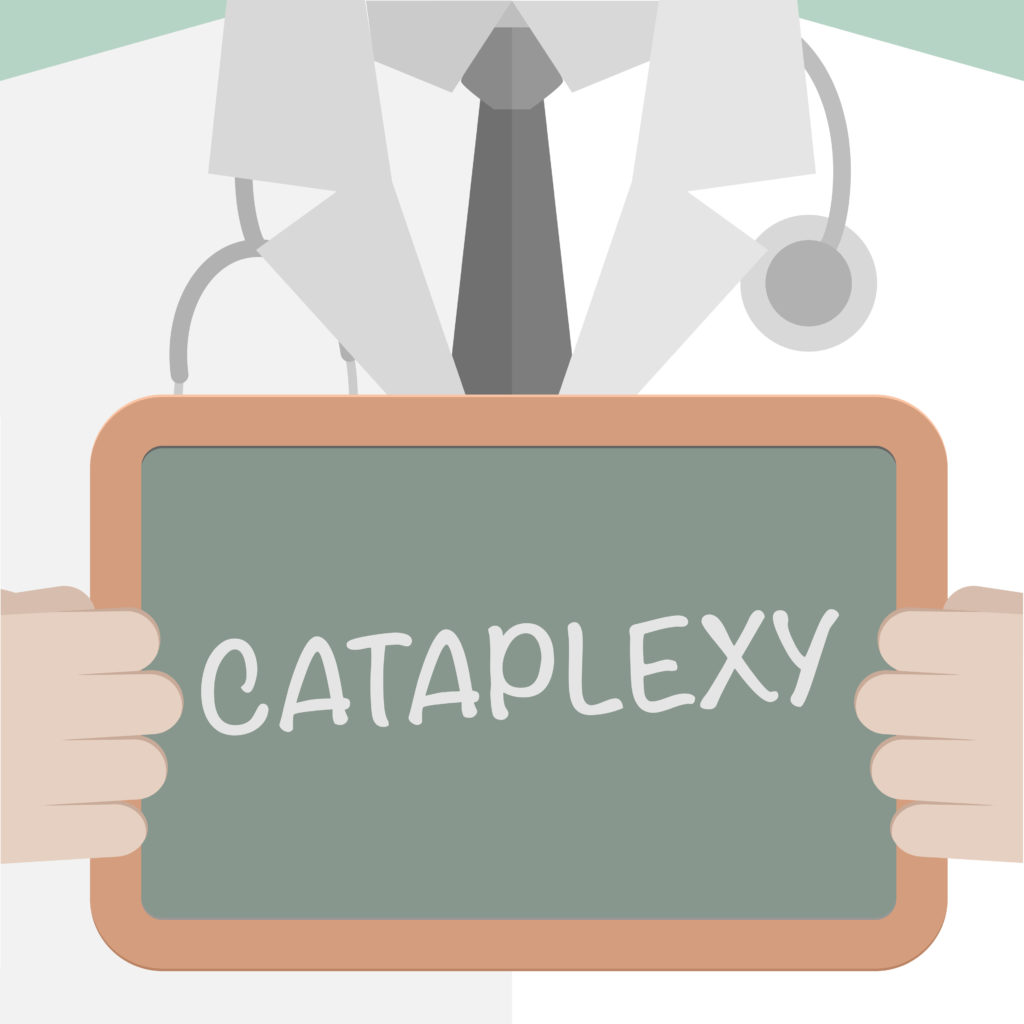Any condition that leaves you unable to move, even for a short amount of time, can be scary. However, many people live with the risk of this every day, in the form of either cataplexy or narcolepsy. We will try to answer the question, “What is cataplexy?” and look at what this condition means and how it can be managed for a better quality of life.
What Is Cataplexy?

Sleep specialists define cataplexy as a sudden but brief loss of muscle control usually triggered by strong emotions. These emotions are usually considered positive, such as a fit of laughter.
Sometimes the episode can cause someone to fall and be completely paralyzed for a couple of minutes, although they can usually still move their eyes. In other instances, only partial paralysis occurs, which may be seen in the barest droop of an eyelid.
Some people assume that cataplexy is a symptom associated with narcolepsy; however, by definition, cataplexy is a condition in its own right, rather than simply a symptom. Cataplexy can also occur due to:
- Angelman Syndrome
- Norrie Disease
- Medication such as lamotrigine or clozapine
For a narcolepsy definition, Psychology Dictionary states that it is a “neural disorder which consists of excessive daytime sleepiness which is paired with very brief attacks of sleep which cannot be repressed during the waking hours.” In other words, sufferers of severe narcolepsy may fall asleep without warning at any point.
Cataplexy is found in many sufferers of narcolepsy, although it may not exhibit until years after the onset of narcolepsy or excessive daytime sleepiness (EDS). Narcolepsy sufferers who also experience cataplexy are often described as having Type 1 narcolepsy.
Narcolepsy vs. Cataplexy
- During an episode of narcolepsy, the individual is asleep, but during cataplexy, they are awake and unable to move.
- Narcolepsy isn’t usually affected by how much sleep the individual gets per night, whereas it’s possible cataplexy may be managed via a good sleep routine.
- Cataplexy can occur even if you don’t have narcolepsy but is often misdiagnosed as some sort of seizure disorder.
- Cataplexy is associated with strong emotion, whereas narcolepsy doesn’t always have a specific trigger.
Causes of Cataplexy
Both narcolepsy and cataplexy may be associated with a lack of the neurotransmitter hypocretin. This could be due to an overactive immune response in the brain. People who experience cataplexy may experience one episode a year or multiple episodes every day. It’s not known for certain what governs the frequency or strength of the episodes.
Cataplexy may also be worsened by fatigue, sudden changes in medication, and even stress. Some people state that stressful situations can be a direct trigger for an episode.
Symptoms of Cataplexy

Because the severity of cataplexy episodes varies, it can be helpful to understand how it presents. It may be a full paralysis event, but it could also be:
- Facial twitches
- Flickering eyes or an involuntary grimace
- Sudden difficulties with a speech that resolve after a couple of minutes
- Drooping eyelids
- Knees trembling
- Suddenly dropping the head or jaw
These symptoms can be alarming to anyone who is not aware that they suffer from cataplexy, as some of these symptoms resemble what happens when you have a stroke. If in any doubt at all, seek emergency medical care.
You should also contact your doctor if you experience any of these symptoms, particularly if you suffer from narcolepsy or EDS, as they may be able to prescribe treatment or give advice.
Dangers of Cataplexy
Cataplexy doesn’t have any known physical ramifications other than the risk of hurting yourself if you fall. There’s no lasting damage to either the brain or the body after an episode. However, if your muscles fail while you are out and about, of course, there is the risk of injuring yourself.
Make sure whoever you are out with knows that you could have an episode and wear clothes that you’re less likely to get injured in, for example, jeans rather than shorts. At home, consider soft carpets instead of hard floors, and try to ensure that glass and other breakables are out of the way of anywhere you may fall.
Treatment for Narcolepsy and Cataplexy
Neither narcolepsy nor cataplexy has a cure, but there are ways to manage symptoms or minimize the likelihood of experiencing an episode of either condition.
Medication
Currently, sodium oxybate is prescribed for some individuals who experience cataplexy or narcolepsy. It may reduce the intensity and the frequency of episodes, but side effects can include nausea and headaches, so discuss this with your doctor.
Good Sleep Hygiene
There’s no evidence showing that improving sleep disorders at night affects narcolepsy. But it could reduce the intensity of cataplexy episodes.
- Try to go to sleep at the same time every night.
- Try to rise at the same time each day.
- Regular napping may be recommended for narcoleptic people who are excessively sleepy in the daytime.
- Only eat lightly before bedtime.
- Keep your sleeping space at a good temperature, quiet, and dark.
- Avoid technology for an hour before going to bed.
Lifestyle Management
You may be able to reduce the intensity of episodes by:
- Limiting alcohol
- Limiting caffeine
- Eating a healthy, balanced diet
- Exercising regularly
- Maintaining good mental health and talking to someone if needed
It’s helpful to know that you’re not the only one experiencing these episodes. Ask your doctor if there is a support group or search for one in your local area. You may even find people who have dealt with cataplexy who can give you their coping strategies and help you take back control of your days.
Takeaway
Cataplexy is a sudden loss of muscle control often caused by strong emotion, such as laughter. It can be associated with narcolepsy. Good sleep hygiene and routines might be effective in minimizing the impact of cataplexy and narcolepsy.



129 Replies to “What Is Cataplexy? The Complete Guide”
tetracycline 300 mg
robaxin for back pain
trental 400 online india
can you buy metformin without a prescription
buy lyrica 75 mg online
lexapro 5mg tablet price
buy zovirax uk
best price generic lexapro
where to get zofran cheap
buy online viagra tablets
atarax 25 mg tablets
modafinil singapore
tretinoin canada pharmacy
metformin 120 pills cost
where can i buy elimite cream over the counter
buy cheap levaquin
no prescription canada propranolol
azithromycin prescription
metformin 5000 mg
baclofen 10 mgs no prescription
robaxin cost
flomax no prescription
antabuse cost in us
cialis generic coupon
motilium otc
wellbutrin 142
reglan prices
effexor 225 mg
flomax over the counter equivalent
buy zithromax 1000 mg online
buspar pill 10 mg
prednisolone 5 mg
lasix without a prescription
cost of generic synthroid
elimite cream for sale
diflucan where to buy uk
over the counter valtrex medication
synthroid 150 mcg tab
lipinpril
generic elimite
suhagra 10 mg
metformin 5000 mg
ordering diflucan without a prescription
plaquenil 200 mg prices
over the counter robaxin
ivermectin lotion price
levitra online fast shipping
prozac in mexico
wegovy from canada
semaglutide generic cost
semaglutide online order
buy rybelsus
price lisinopril 20 mg
kolay yemek tarifleri
order metformin online uk
高級 ダッチワイフ ダッチワイフの取引の上昇は、いずれにせよ、封鎖中に進行します
instagram begeni satin al
buy valtrex pills online
20 mg tadalafil best price
cheapest pharmacy for prescription drugs
canadian pharmacy prices
prescription valtrex online